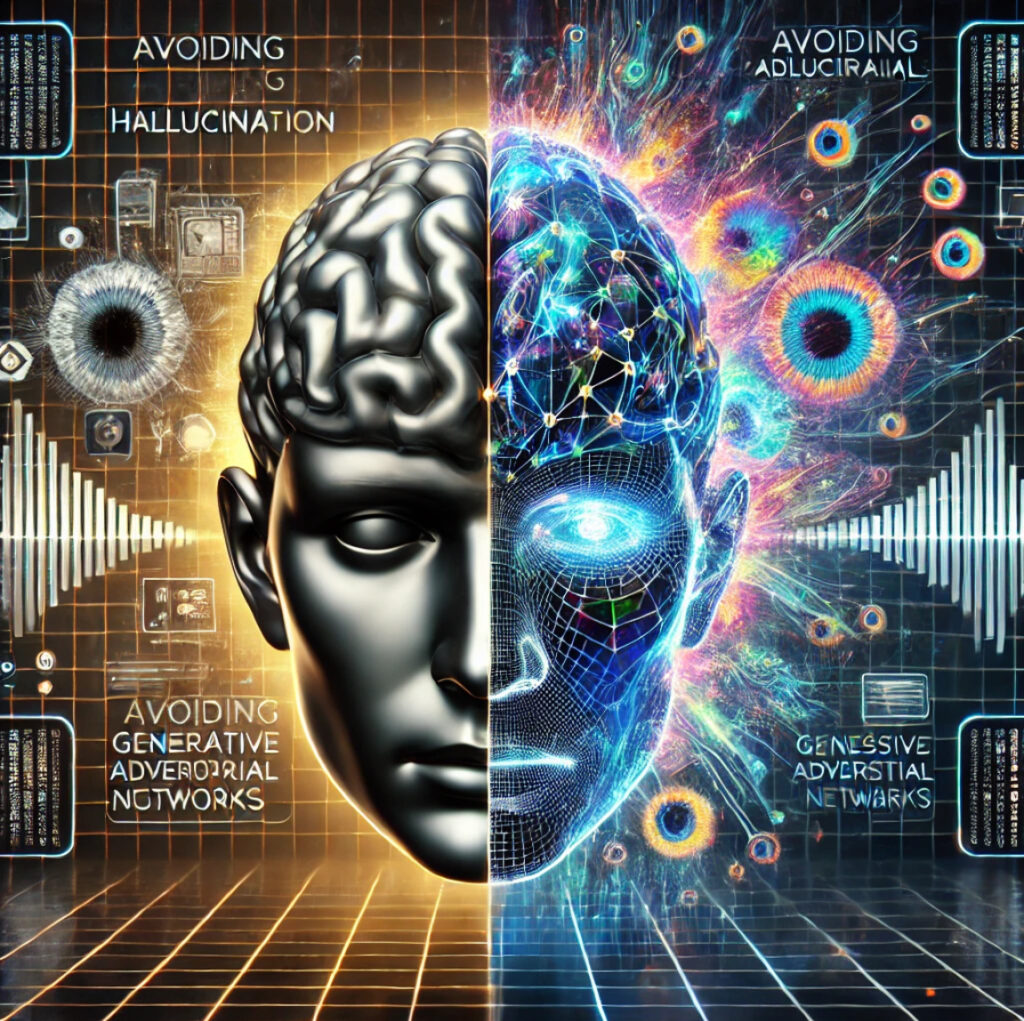Generative Adversarial Networks (GANs) have transformed the field of generative modeling, enabling the creation of highly realistic data across multiple domains. However, the challenge of “hallucination,” where the generator produces unrealistic or implausible outputs, persists. This article explores technical strategies to mitigate hallucination in GANs.

Understanding Hallucination in GANs
Hallucination in GANs occurs when the generator produces outputs resembling random noise or features that are unrealistic and not present in the target data distribution. This issue arises during the adversarial process, where the generator fails to create coherent or meaningful data.
Strategies to Avoid Hallucination in GANs
- Improving GAN Architecture
The architecture of both the generator and discriminator significantly impacts the quality of generated data. Here are critical architectural enhancements:
- Progressive Growing (PGGAN): Gradually increasing image resolution during training helps the generator learn fine details incrementally, reducing hallucination at higher resolutions.
- Residual Blocks: Adding residual blocks in both networks enhances training stability and feature representation, helping to retain valuable information and mitigate issues like vanishing gradients.

- Regularization Techniques
Regularization methods constrain the generator during training, preventing unrealistic outputs:
- Spectral Normalization: Controls the Lipschitz constant of discriminator weights, leading to more stable training and reducing hallucinations.
- Gradient Penalty: Ensures gradient norms stay within a reasonable range, stabilizing training and reducing artifacts.
- Data Augmentation
Data augmentation enhances training data diversity and quality, aiding the generator in producing more realistic outputs:
- Random Cropping and Flipping: These techniques increase variability in training data, making it harder for the generator to overfit and produce hallucinations.
- Color Jittering: Adjusting image properties like brightness, contrast, and saturation during training helps the generator handle color variations, reducing unrealistic artifacts.
- Training Techniques
The training process can be fine-tuned to mitigate hallucination:
- Two-Time Scale Update Rule (TTUR): Updating the discriminator and generator at different rates, typically with more frequent updates to the discriminator, helps guide the generator towards more realistic outputs.
- Learning Rate Scheduling: Adaptive learning rates prevent premature convergence to suboptimal solutions, minimizing the risk of hallucination.
- Loss Function Modifications
Modifying the loss function can provide better feedback to both networks, improving generated data quality:
- Wasserstein Loss with Gradient Penalty (WGAN-GP): This loss function offers a smoother gradient for the generator, avoiding mode collapse and reducing hallucination.
- Least Squares GAN (LSGAN): Provides more stable training and better gradient flow, reducing the risk of hallucination.

- Post-Processing Techniques
Post-processing can sometimes help mitigate remaining hallucinations:
- Image Denoising: Techniques like median or bilateral filtering can remove noise and artifacts.
- Super-Resolution: Enhancing details in generated images can refine outputs that might appear hallucinatory.
Conclusion
Mitigating hallucination in GANs requires a multi-faceted approach, including architectural enhancements, regularization techniques, data augmentation, optimized training strategies, loss function modifications, and post-processing. As GAN technology evolves, ongoing research will continue to uncover new methods to reduce hallucination, further advancing the capabilities of generative models.